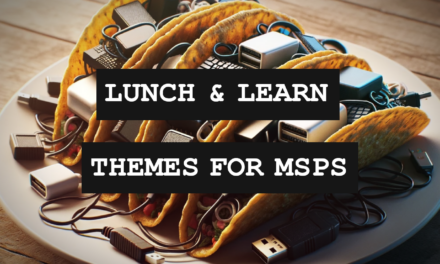Formatting Your Content Titles For Best Results
Creating content and executing a brand strategy is no doubt the hottest trend in B2B marketing right now, primarily because it continues to drive positive results. While choosing content topics that provide value is a challenge, an even bigger challenge is titling your article, video, or podcast to accurately reflect the topic and produce the highest click trough rate possible. Small changes in formatting and word use can impact this by a significant rate. If you want to get eyeballs on your content to provide value to your audience, it is imperative to pay attention to the details when naming it.
Title Format Variations
There are several different ways to structure a title, each of them appealing to readers in different ways. Here are a few examples of the most commonly used title formats and how each may be used to headline the same piece of content.
List
A list headline typically begins with a number and describes the amount of examples you will provide on a given topic, for example: “7 Ways to Improve Your Company’s Email Security.”
How-To
A how-to headline will reflect that your article provides clear instructions on how to do something, for example: “How to Improve a Company’s Email Security.”
Question
A question headline will be structured in a way that the reader is asking the question and you are providing a response, for example “How Can I Improve My Company’s Email Security?”
The Ultimate Guide To Cash Flow For Managed Services
Sponsored by Alternative Payments & Zest
Title Point of View
If you will notice, some of these titles address the reader directly (using the pronoun “You”), indirectly (using no personal pronouns), or are structured in the first person (using the pronoun “I”). The point of view in your title should also reflect how you address the reader in your content.
For example, if you narrate a video as if you are speaking directly to the viewer, then you should address the viewer this way in your title as well. Direct titles are also shown to have a higher click through rate than those that are positioned indirectly.
Positive & Negative Superlatives
When writing your content titles also be sensitive to the use of superlatives. According to research data from publishing platform Outbrain, articles on their platform with positive superlatives (such as using the word “best”) performed 29 percent worse than the average. In the same study, they also found that negative superlatives (such as using the word “worst”) performed 30 percent better than average.
Why you ask? It is my opinion that the negative titles are more likely to come off as an authentic, unbiased point of view, whereas the positive titles are likely expected to contain some kind of sales twist or misleading information. Much like my father always told me, “if something is too good to be true, it normally is.”
The Ultimate Guide To Cash Flow For Managed Services
Sponsored by Alternative Payments & Zest
Numbering of Lists
My personal favorite type of content to create is lists. This content structure popularized by Buzzfeed is a great way to organize your content and is proven to be more click-worthy to reader demographics under forty years old.
Research also states that odd-numbered titles outperform even-numbered titles in click through rate by a substantial margin, although as a longtime creator of lists this has generally not been my experience. Even so, I still continue to use primarily odd numbered list in my articles, just in case there is merit to those observations.
Keyword Density
Lastly, when writing your content titles, it can be tempting to stuff them with keywords so that your video or article will theoretically rank better in search queries. This strategy is about as played out as a Y2K pop song but even lacks the occasional nostalgic charm. Should you include keywords in your title? Yes. However, it is important not to sacrifice the quality of your audience’s experience to do so.
If you think that a specific title will attract more viewers of your content, even though the keywords are sparse, then use it anyway. The algorithms on search, discovery and content platforms are now smart enough to see through the keyword stuffing anyway and attempt to favor good content.

SPONSORED BY ZEST

















